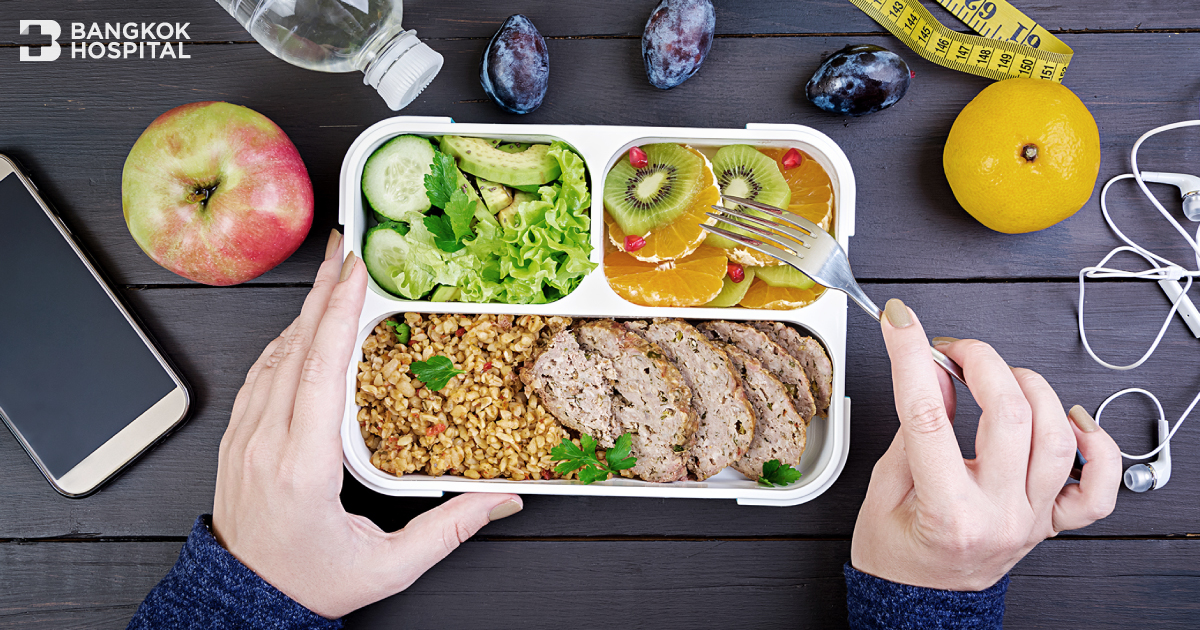Caloric intake is defined as the number of calories that are taken each day while caloric output is the resting metabolic rate plus any physical activity. When caloric intake is more than caloric output, it subsequently results in overweight or obesity. Excess fat substantially increases chances of developing other health-related problems including high cholesterol, high blood sugar and heart disease. In fact, obesity is relatively associated with genetics, gender, age and stress as well as the level of physical activity and lifestyle habits.
Get your weight checked
The simple way to check whether you are classified to be either obese or overweight is the measurement of Body Mass Index or BMI. The BMI is defined as the body mass (kilograms) divided by the square of the body height (meters), and is universally expressed in units of kg/m2. The healthy BMI range for Asian adults is 18.5 to 22.9 kg/m2. If BMI falls in the range of 23-24.9 kg/m2, it indicates “overweight”. BMI that is equal to or greater than 25, falls within the obese range.
Besides BMI calculation, waist circumference (WC) is another indicator of health risk associated with excess fat around the waist. Measuring waist circumference starts from standing up to get an accurate waist measurement, then wrapping the tape measure around the widest part of the stomach, across the belly button. The tape measure should rest gently on the skin. Comparing to the height (cm.) divided by 2, if the measured number is greater more than height (cm.) divided by 2, for example, height is 160 cm., after being divided by 2 is 80 and measure value of waist is 90 cm., it refers to centralized fat.
To describe weight more accurately than BMI or waist circumference, body composition analysis can accurately show changes in fat mass, muscle mass, and body fat percentage.
Types of obesity
Based on the body shape, there are 2 main types of obesity:
- Apple-shaped body or centralized fat is the accumulation of fat around the chest and belly makes body shaped like an apple. It increases risks of developing health-related problems such as diabetes and cardiovascular disease.
- Pear-shaped body is the accumulation of fat around the belly and below parts such as on the thighs and buttocks, causing body to have a pear shape. It tends to develop less health associated conditions, compared to apple-shaped body.
Obesity has been recognized as a chronic progressive disease that unfavorably affects physical health and mental condition. It is a major contributing factor to diabetes, hypertension, heart disease, neurological condition such as stroke, respiratory disorder e.g. obstructive sleep apnea and bone-joint disease such as knee arthritis.
Nutrition flag to stay away from obesity
Food‐based dietary guidelines recommend people to maintain proper weight and consume a variety of foods from each of the five food groups. The nutrition flag or food guide provides information on the proper portions of complex carbohydrates, fruits, vegetables, protein, legumes and pulses, sugar, salt, and fat that is daily recommended. These suggestions include:
- Consume a variety of foods from each of the five food groups and maintain healthy weight.
- Eat an adequate amount of rice or alternative carbohydrates at least one meal per day
- Eat plenty of vegetables and fruits regularly. Minimum amount of vegetable should be more than 4 ladles a day. Less sweet fruits are preferable.
- Regularly eat fish, lean meat, eggs, and legumes and grains.
- Drink milk with appropriate quality and quantity for one’s age.
- Avoid eating high-calorie diets, sugary or salty foods
- Drink enough water and avoid sugar-added drinks
- Eat hygienic and well-cooked foods.
- Avoid or reduce the consumption of alcoholic beverages.
More importantly, the total number of calories a person needs each day varies depending on a number of factors including age, sex, height, weight and level of activity. For children age 6-13 years, women with working age range 25-60 years and the elderly age over 60, the recommended calorie intake per day is 1,600 calories. Whereas teenage girls and boys age 15 up to 25 and men with working age range 25-60 years need 2,000 calories per day. In addition, for particular groups with more physical activities e.g. farmers, athletes and labors daily require 2,400 calories.
In obesity, to effectively lose weight, nutrition professionals largely help to enhance weight management safely and sustainably. Not only to improve body shape and self-confidence, but weight loss also results in a better health in the long run.







